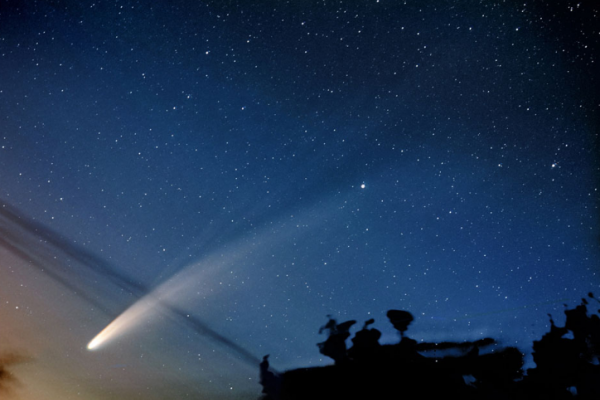Ohio SkyLites - September 2022

What’s Up? Constellations, Planets, and Astronomical Events Visible in September 2022
-Alyssa Whalen
Changing Seasons:
Fall is *almost* officially here! The autumnal equinox occurs on September 23rd this year. That is the day when there will be approximately 12 hours between sunrise and sunset. Most people view the equinox as the start of the season; autumn for the northern hemisphere, and spring for the southern hemisphere. After the equinox, the days will continue to get shorter and shorter until the shortest day: the winter solstice.
The seasons are caused by the Earth’s tilted rotation axis. During the summer months, the northern hemisphere is tilted toward the sun and receives many hours of direct sunlight. The southern hemisphere experiences winter at this time, since it is tilted away from the sun, so it only gets a few hours of indirect sunlight. Then, 6 months after summer when the Earth is on the other side of its orbit around the sun, the northern hemisphere is tilted away from the sun, and experiences winter while the southern hemisphere is tilted toward the sun to experience summer. The equinoxes are times when both the northern and southern hemispheres get equal amounts of sunlight.
Lunar Events:
The September full moon will rise on the evening of September 10th. This moon is commonly known as the Corn Moon by the Native Americans, as this time of year is when corn is often harvested. This year, the September full moon has another title: the Harvest Moon. This title is given to the full moon that occurs closest to the Autumnal Equinox.
This month’s new moon will occur on September 25th, so if you are looking for the best nights to go out and observe, the darkest skies will occur later in the month.
Planets:
In September, the easiest planets to see will be Mars, Jupiter, and Saturn. These planets will be visible to the unaided eye almost all night. Saturn will rise before sunset, but it will shine bright in the twilight. Jupiter will follow around 8 pm, and Mars around 11:30 pm. This month, Mercury and Venus are very close to the sun, so you would need to get up really early to see Venus before sunrise, and stay up just past sundown to get the chance to see Mercury
Neptune will rise almost exactly at sunset and will be visible all night, but it is a faint planet, so the aid of binoculars or a telescope will be needed to get a good view. Uranus will rise later in the evening, around 10 pm, but will also require aid to see clearly.
On September 26th, Jupiter will be in opposition and on its closest approach to Earth. Therefore, it will shine brighter than any other time in the year and stay up from sundown to sunup. A good telescope will allow you to view details of Jupiter’s cloud cover, as well as the 4 Galilean moons.
Constellations:
Now that August is over, Scorpius and Libra have set for the season, but Taurus is beginning to rise on the eastern horizon. Taurus won’t be easily visible until late September or October. Until then, Pisces, Perseus, and Andromeda have risen high enough to be observable in dark enough skies. The Summer Triangle remains to guide observers to the milky way, but with fall fast approaching, it will soon be more difficult to view.
The sky changes drastically from sunset to sunrise, it is possible to see a large variety of constellations if you are awake at the right times. In fact, it will soon be possible to view Orion, which is a winter/spring constellation, but you will have to be awake in the early morning.
Pictured: Stellarium image of the night sky on September 15th at Midnight
Sources:
http://www.seasky.org/astronomy/astronomy-calendar-2022.html
https://www.timeanddate.com/astronomy/night/@5165418
Photos:
https://www.coursehero.com/study-guides/earthscience/sun-earth-relationship-the-seasons/
